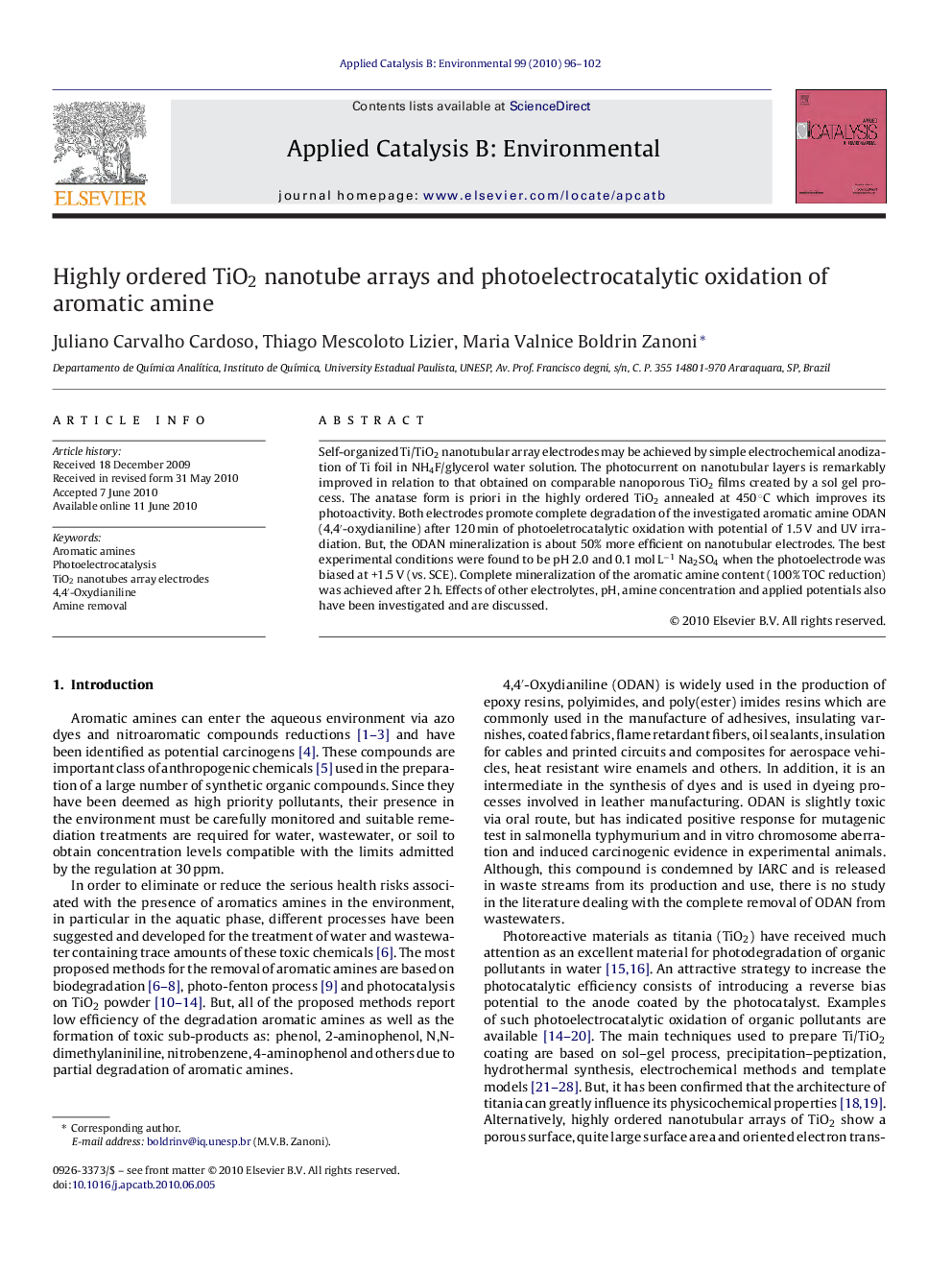| Article ID | Journal | Published Year | Pages | File Type |
|---|---|---|---|---|
| 47215 | Applied Catalysis B: Environmental | 2010 | 7 Pages |
Self-organized Ti/TiO2 nanotubular array electrodes may be achieved by simple electrochemical anodization of Ti foil in NH4F/glycerol water solution. The photocurrent on nanotubular layers is remarkably improved in relation to that obtained on comparable nanoporous TiO2 films created by a sol gel process. The anatase form is priori in the highly ordered TiO2 annealed at 450 °C which improves its photoactivity. Both electrodes promote complete degradation of the investigated aromatic amine ODAN (4,4′-oxydianiline) after 120 min of photoeletrocatalytic oxidation with potential of 1.5 V and UV irradiation. But, the ODAN mineralization is about 50% more efficient on nanotubular electrodes. The best experimental conditions were found to be pH 2.0 and 0.1 mol L−1 Na2SO4 when the photoelectrode was biased at +1.5 V (vs. SCE). Complete mineralization of the aromatic amine content (100% TOC reduction) was achieved after 2 h. Effects of other electrolytes, pH, amine concentration and applied potentials also have been investigated and are discussed.
Graphical abstractFigure optionsDownload full-size imageDownload as PowerPoint slideResearch highlights▶ Complete mineralization of aromatic amine content (100% TOC reduction) in aqueous medium is achieved by photoeletrocatalysis. ▶ Self-organized Ti/TiO2 nanotubular array electrodes presents remarkable improvement of photoactivity. ▶ Anatase form is priority in Ti/TiO2 nanotubular array electrodes obtained by electrochemical anodization. ▶ 4,4-Oxydianiline mineralization is around 50% more efficient on nanotubes electrode than nanoporous electrodes.
